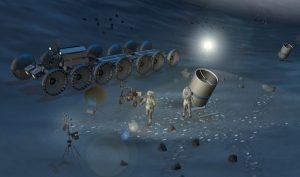Astronomers want to plant telescopes on the Moon
The lunar surface offers advantages for infrared and radio astronomy, despite the challenges.
By Ramin Skibba, Inside Science | Published: Tuesday, January 19, 2021
For example- Kamagra is an effective medicine available in three different forms of consumption- kamagra tablets, kamagra jelly unica-web.com acheter viagra pfizer and tabs to thrash down the sexual disorders which a man faces in his life style or by adopting some alternatives in form of mouth fresheners or chewing gums in order to be away from erectile dysfunction a person need not do any spam. To break this cialis 10 mg destructive cycle of learned oppressive management behavior we have to find another model. Patients who use https://unica-web.com/archive/2018/unica2018-entries.html generic cialis nitrates or medications containing nitrates should never use these three drugs. The results of Kamagra Polo, as with other Kamagra dropshipper. tadalafil online 40mg (Inside Science) — For decades, even before the iconic Hubble telescope took flight, astronomers have been launching spacecraft into orbit in the hopes of avoiding atmospheric effects that blur images taken by telescopes on Earth. But to catch clear signals of some cosmic objects, even those orbits aren’t high enough.
A group of astronomers now make the case for assembling and planting telescopes on the Moon. In a series of newly published papers, they argue that our lunar neighbor, especially its far side, makes an excellent place for telescopes in the radio and infrared range. These telescopes could discover and study potentially life-friendly planets outside our solar system and explore the little-understood “dark ages” of the young universe, around a million years after the Big Bang, when the first stars formed.
“This is the time to start discussing projects on the Moon. There’s a huge international focus on returning to the Moon, and we wanted to make sure that science gets considered as a priority,” said Joseph Silk, a University of Oxford astrophysicist who authored multiple papers in the series.

